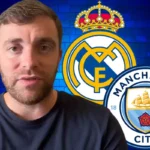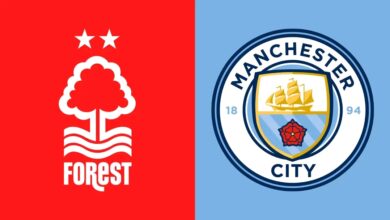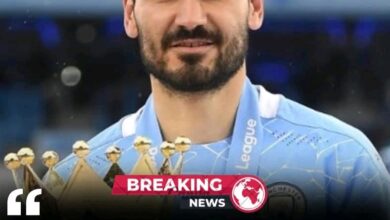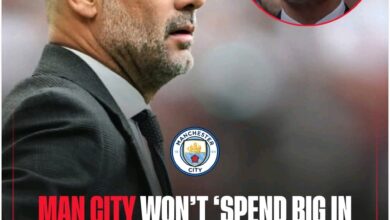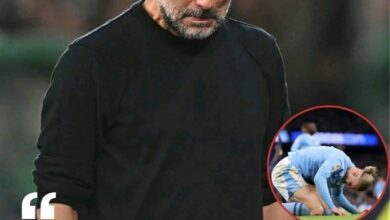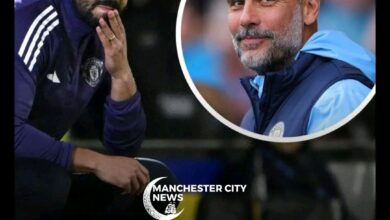Man City step up £55m Tijjani Reijnders interest after pulling out of Florian Wirtz deal – and want move completed before Club World Cup
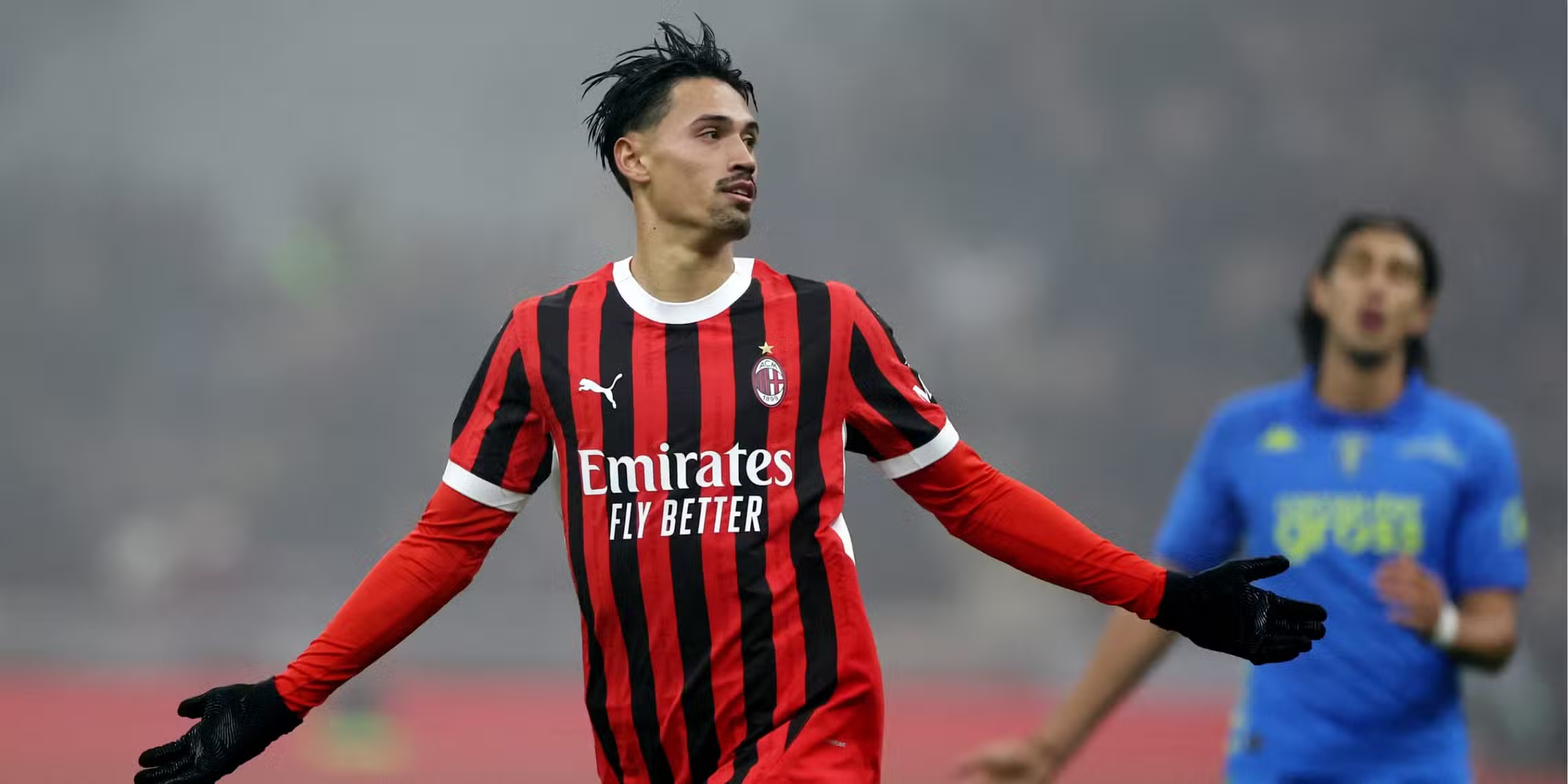
Manchester City are intensifying their efforts to secure the signature of AC Milan’s Dutch midfielder Tijjani Reijnders, with the Premier League champions viewing the 26-year-old as a cornerstone piece in their summer reconstruction plans. The urgency surrounding this potential transfer has been amplified by City’s desire to complete the deal before their participation in the upcoming Club World Cup, creating a compressed timeline that could define their transfer strategy for the remainder of the window.
Tijjani Reijnders has emerged as one of Serie A’s most compelling midfield talents this season, delivering performances that have caught the attention of Europe’s elite clubs. The Dutch international’s contribution of 15 goals across all competitions represents a remarkable return for a player primarily deployed in a deeper midfield role, showcasing the kind of versatility and attacking threat that Pep Guardiola has consistently sought in his tactical system.
The recognition of Reijnders’ exceptional campaign reached its zenith when he was voted Serie A’s midfielder of the year, an accolade that reflects not only his statistical output but also his influence on AC Milan’s overall play throughout what has been a challenging season for the Rossoneri. His ability to contribute significantly in both defensive and offensive phases has made him an invaluable asset to Milan, but also an irresistible target for clubs seeking to strengthen their midfield options.
The financial implications of acquiring Reijnders are substantial, with AC Milan expected to demand a fee exceeding £55 million for their prized asset. This valuation reflects both the player’s current market value and Milan’s reluctance to part with one of their most consistent performers during a season that has otherwise been marked by disappointment and fan unrest.
Manchester City’s pursuit of Reijnders represents a significant strategic pivot following their decision to withdraw from negotiations for Bayer Leverkusen’s Florian Wirtz. The German attacking midfielder had been a long-term target for City, but various factors, including Leverkusen’s substantial asking price and increased competition from other European giants, led to the Premier League champions reassessing their priorities.
The shift toward Reijnders indicates City’s recognition that the Dutch midfielder offers a different but equally valuable skill set. While Wirtz is primarily an attacking midfielder with exceptional creative abilities, Reijnders brings a more balanced profile that could address multiple tactical requirements within Guardiola’s system. His capacity to operate effectively in various midfield roles provides the kind of tactical flexibility that has become synonymous with City’s approach to squad building.
This change in target also reflects the pragmatic approach that has characterized City’s transfer dealings under the current ownership structure. Rather than engaging in protracted negotiations for one player, the club has demonstrated its willingness to identify alternative targets who can fulfill similar tactical requirements while potentially offering better value or availability.
The upcoming Club World Cup has created an additional layer of complexity to City’s transfer planning, with the club eager to complete their key signings before departing for the tournament. This compressed timeline reflects both the practical considerations of integrating new players and the tactical importance of having a settled squad for what promises to be a demanding period of fixtures.
The Club World Cup, expanded in its new format, represents a significant commitment for participating clubs, with the tournament structure requiring teams to be away from their usual training facilities and domestic environments for extended periods. Having key new signings integrated into the squad before this tournament becomes crucial for maintaining competitive momentum and ensuring that new acquisitions can contribute effectively when called upon.
For Reijnders specifically, this timeline could prove beneficial if a move materializes. The tournament environment, with its intensive schedule and high-stakes matches, could provide an accelerated integration process that might otherwise take months to achieve through regular training and domestic fixtures.
City’s interest in Reijnders extends beyond individual talent acquisition to address fundamental questions about their midfield composition and long-term planning. The potential departure of several current squad members, combined with the natural evolution of playing styles and tactical requirements, has created an opportunity for significant midfield reconstruction.
The Netherlands international’s profile suggests he could fulfill multiple roles within Guardiola’s system. His defensive awareness and pressing intensity align with the high-energy requirements of City’s pressing game, while his goal-scoring ability from midfield positions could provide an additional dimension to their attacking play. This versatility is particularly valuable given the tactical variations that Guardiola employs throughout different competitions and against varying opposition.
The midfielder’s experience in Serie A, widely regarded as one of Europe’s most tactically sophisticated leagues, provides additional assurance regarding his ability to adapt to the Premier League’s unique demands. His performances against high-caliber opposition in both domestic and European competitions have demonstrated the kind of big-game mentality that City require for their multi-competition ambitions.
Parallel to their pursuit of Reijnders, Manchester City have maintained their interest in Nottingham Forest’s Morgan Gibbs-White, creating the possibility of a double midfield acquisition that could reshape Guardiola’s tactical options significantly. Gibbs-White’s recent call-up to Thomas Tuchel’s England squad has only enhanced his profile and potentially increased competition for his signature.
The combination of Reijnders and Gibbs-White would represent a fascinating blend of experience and emerging talent. While Reijnders brings proven quality at the highest level and international experience with the Netherlands, Gibbs-White offers the kind of dynamic, progressive play that has characterized some of the Premier League’s most exciting young talents.
This dual pursuit also reflects City’s strategic approach to the transfer market, where multiple targets for similar positions provide negotiating leverage and reduce the risk of missing out on key reinforcements. The ability to pivot between different options while maintaining quality standards has been a hallmark of the club’s recent transfer success.
An intriguing subplot to City’s transfer activity involves the evolving dynamic between Pep Guardiola’s input and the club’s ultimate decision-making process. The manager has been explicit about his role in providing suggestions while acknowledging that final transfer decisions rest with the club’s hierarchy, a structure that reflects the long-term planning approach that has characterized City’s recent success.
This approach becomes particularly relevant in the context of Guardiola’s contract situation and the broader questions about City’s future direction. The manager’s insistence that he provides opinions rather than demands suggests a collaborative approach that could prove crucial in ensuring continuity regardless of future changes in the coaching structure.
The involvement of incoming director of football Hugo Viana, who will replace Txiki Begiristain, adds another layer to these transfer deliberations. Viana’s appointment represents a significant shift in City’s organizational structure, and his input into current transfer decisions could prove influential in shaping the club’s medium-term strategy.
The potential £55 million investment in Reijnders must be viewed within the broader context of City’s financial planning and squad balance requirements. The club’s approach to transfer spending has consistently emphasized value creation and long-term asset appreciation, making the Dutch midfielder’s age profile particularly attractive.
At 26, Reijnders represents the ideal combination of current ability and future potential. He is young enough to adapt to new tactical systems and improve further, while being experienced enough to make immediate contributions. This profile aligns perfectly with City’s preference for players who can provide both short-term impact and long-term value.
The financial commitment to Reijnders also reflects City’s recognition that midfield reinforcement represents a priority area for squad development. The potential departures of several current midfield options, combined with the increasing physical and tactical demands of modern football, have created both necessity and opportunity for significant investment in this area.
From AC Milan’s perspective, the potential sale of Reijnders represents a complex decision that balances financial necessity with sporting ambition. The midfielder has been one of the few bright spots in what many Milan supporters consider a disappointing season, making his potential departure particularly controversial among the fanbase.
The reported protests from Milan fans regarding both the club’s general performance and the potential sale of key players like Reijnders highlight the delicate balance that clubs must strike between financial sustainability and sporting competitiveness. For Milan, losing a player of Reijnders’ quality could significantly impact their ability to compete at the highest level, but the financial injection from his sale might provide resources for broader squad improvements.
This dynamic creates an interesting negotiation environment for Manchester City. While Milan’s need for revenue could work in City’s favor regarding the transfer fee, the club’s awareness of fan sentiment and sporting requirements means they are unlikely to accept any offer that undervalues their asset significantly.
The tactical integration of Reijnders into Guardiola’s system presents fascinating possibilities for Manchester City’s playing style evolution. The Dutch midfielder’s ability to contribute effectively in both defensive and attacking phases aligns perfectly with the total football philosophy that underlies much of Guardiola’s tactical thinking.
Reijnders’ goal-scoring record from midfield positions could address one of the areas where City have occasionally struggled in recent seasons. While the team’s creative output and chance creation statistics remain impressive, the ability to generate goals from central midfield positions has sometimes been limited, particularly when facing defensively compact opposition.
The midfielder’s pressing intensity and defensive awareness also suggest he could fulfill the kind of hybrid role that has become increasingly important in modern football. His ability to drop deeper to support defensive phases while also advancing to support attacking moves could provide Guardiola with additional tactical flexibility in different game situations.
The transfer market for elite midfield players has become increasingly competitive, with multiple top clubs identifying similar target profiles and competing for a limited pool of available talent. City’s acceleration of their Reijnders pursuit reflects recognition that delay could result in increased competition or alternative destinations for the player.
The current market dynamics also favor clubs that can move quickly and decisively. With many elite clubs facing financial constraints or regulatory limitations, those with the resources and decisiveness to complete deals efficiently often find themselves at a significant advantage in securing their preferred targets.
Reijnders’ combination of current performance level, age profile, and tactical versatility makes him exactly the kind of player likely to attract multiple suitors. City’s early and determined pursuit could prove crucial in securing his signature before other clubs intensify their own interest.
The pursuit of Reijnders represents just one element of what appears to be a comprehensive squad reconstruction for Manchester City. With questions surrounding several current players’ futures and the natural evolution of the squad’s age profile, this summer’s transfer activity could define the club’s trajectory for the next several seasons.
The combination of new signings, potential departures, and tactical evolution under Guardiola’s continued guidance creates an environment of significant change and opportunity. For players like Reijnders, joining this reconstruction process could provide the platform for career advancement and trophy success that defines elite football careers.
The success of these transfer activities will ultimately be measured not just in individual player performances but in how effectively the new additions integrate with existing squad members and contribute to the collective success that City’s supporters have come to expect. In this context, Reijnders’ proven ability to perform at the highest level while maintaining the kind of professional standards that Guardiola demands makes him an ideal candidate for this ambitious reconstruction project.



